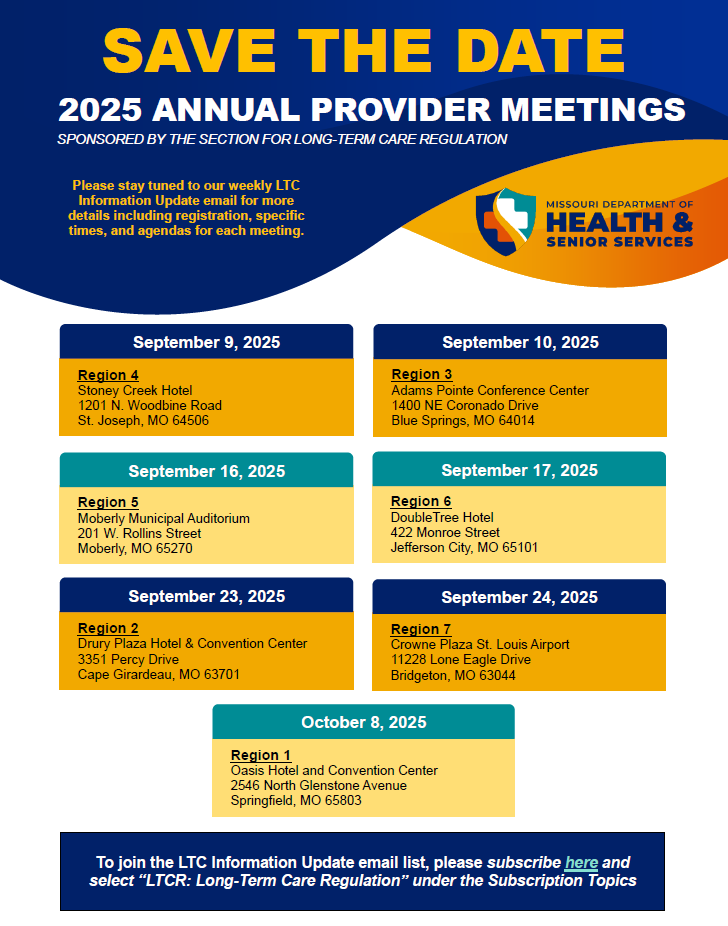The Department of Health and Senior Services Central Office Medical Review Unit (COMRU) and the Department of Mental Health (DMH) are pleased to announce changes to the processing of Pre-Admission Screening and Resident Review (PASRR) Level 1 applications that indicate a Level 2 evaluation should be completed – those with serious mental illness and/or intellectual disability/developmental disability related diagnoses. The goal of these changes is to streamline the process and to decrease the review time for these applications.
Currently, Level 1 applications that indicate a Level 2 evaluation are first reviewed by COMRU staff to determine whether the applicant meets Nursing Facility Level of Care (LOC) before the application is sent to the DMH for a Level 2 evaluation by DMH’s contractor, Bock Associates. This review process can take several working days to complete, which may delay the transition to a nursing home.
Effective July 1, 2025, Level 1 applications that indicate a Level 2 evaluation, based on the responses on the application, will be sent to DMH for review and determination of whether a Level 2 evaluation is necessary. The LOC determination will be made after DMH makes the determination on the Level 2 evaluation. DHSS expects to complete the LOC within one business day of the DMH determination.
This change will have no impact to individuals completing applications – there will be no changes to the application or to the submission process.
COMRU does receive several applications that do not indicate a Level 2 evaluation based on the responses on the application, however a review of the application and attachments/supporting documentation shows the application should have indicated a Level 2 evaluation. Often, the individual has already been admitted to a nursing home and payment to the nursing home may be delayed until the Level 2 evaluation is complete. A good refresher on the conditions that indicate a Level 2 evaluation can be found here. Please ensure a thorough review of the application and supporting documentation when making admission decisions. An additional tool that will aid in decision-making is a review of the information in CyberAccess. CyberAccess offers many services to providers, such as where Medicaid clients have been receiving services, billed diagnosis and much more. To register for CyberAccess, please contact 888-581-9797.
A new online application link will be provided on COMRU webpage (https://health.mo.gov/seniors/nursinghomes/pasrr.php) starting July 1, 2025.

